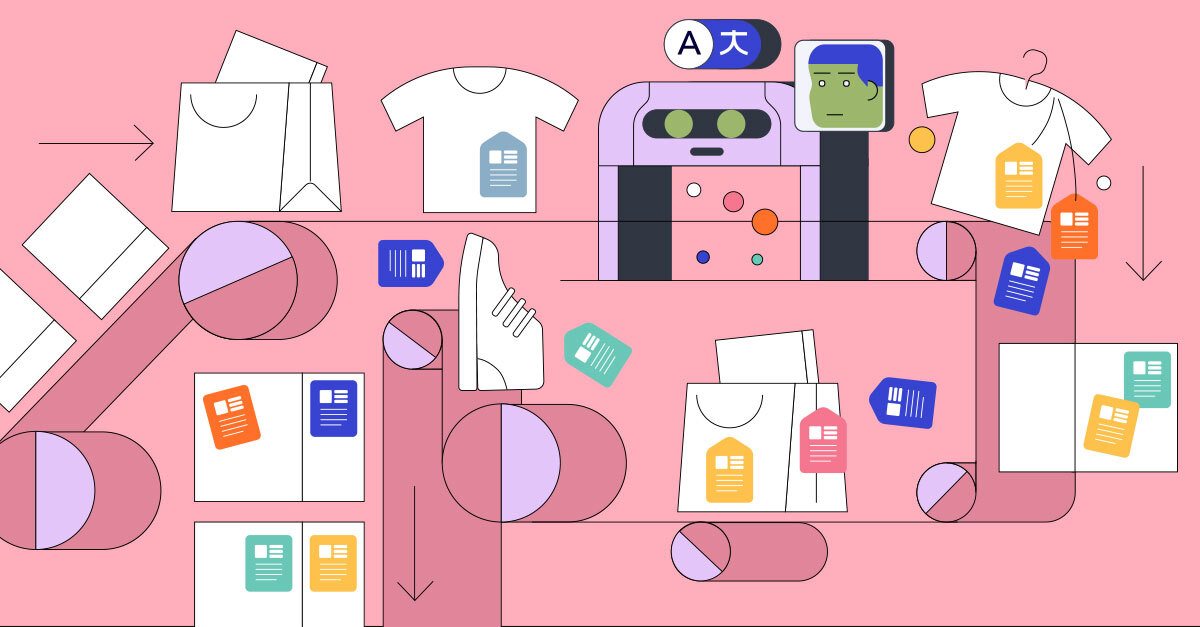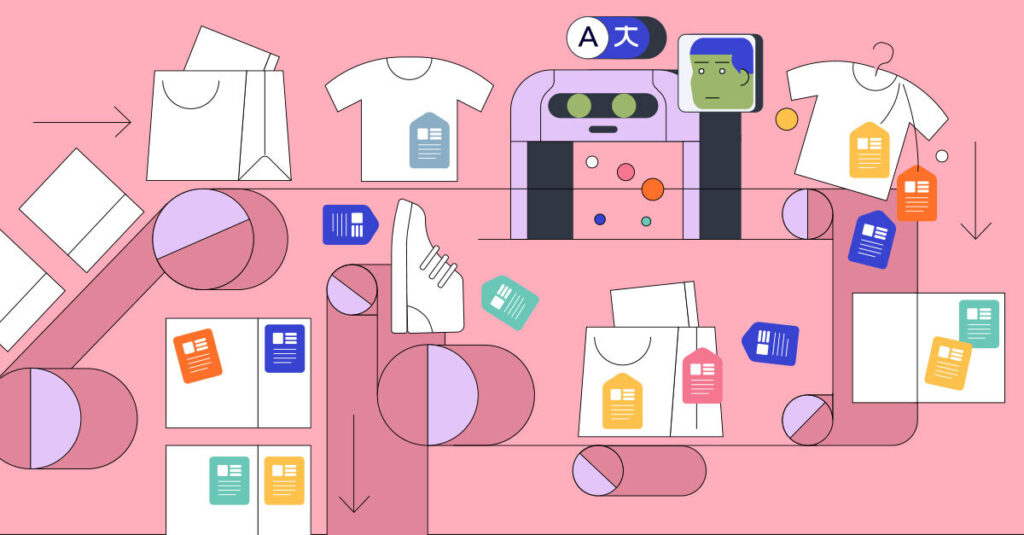 If your product is your business, time to market is critical. And if you have a large amount of product content, it can be a time-consuming process to get it out the door — especially if you’re taking specialized product content into other languages and markets. AI-assisted translation has revolutionized this process, helping global enterprises get to market faster, while saving money and improving consistency.
If your product is your business, time to market is critical. And if you have a large amount of product content, it can be a time-consuming process to get it out the door — especially if you’re taking specialized product content into other languages and markets. AI-assisted translation has revolutionized this process, helping global enterprises get to market faster, while saving money and improving consistency.
Often, product content contains highly repeatable text such as materials, size, dimensions, and product names. To simplify the content, Unbabel combines professional translators with technology for quality translation at speed and scale. This human and tech combination can reduce time to market for new markets by up to 75% and reduce translation cost per word by 50%.
Product content translation
The descriptive nature of product content is ideal for combining the techniques of data management, automation, and AI-assisted MT and specialist translators. These three techniques increase productivity and help you get to market faster while saving money and improving consistency.
Data Management
Data management and file-filtering techniques automatically filter and extract only the content which needs translation. Unbabel’s data repetition optimization checks for repeatable content. It then sets it up to be translated only once and then replicated across the whole file. This helps increase the speed of translation while also reducing word count and final cost. Unbabel’s file-filtering techniques then automatically reconstruct the content in its original form but in the translated languages.
Automation
Automation increases productivity throughout the translation workflow, and this starts at the beginning of the process. The way we receive content for translations can be fully automated through APIs integrated into your Product Information Management (PIM) platform or Content Management System (CMS).
By preparing for translation upstream in the workflow, we can take full advantage of the repeatability of the process to automate things like context injection, repetition handling, file management, and desired translation service. For context injection, developers can build the file with the text to be translated and add context (usually in the form of an image showing where or how the content is used). When the translator comes to translate the content, the context is automatically displayed. This saves research on the translator’s part or back-and-forths with the client, saving time for everyone involved.
Automation can also be used where appropriate to insert pre-approved content from previous translations.
AI-assisted MT & Specialist translators
The productivity and quality of translation by specialist translators are increased with AI-assisted MT. AI-assisted MT processes the first layer of translation, which leaves translators more time to focus on the content for which they’re really needed — the accuracy review and any new specialist text.
AI-assisted translation also helps if you’re adding in a client review stage to your translation process. For example, Unbabel clients can review the translated content using the web-based toolkit, to improve efficiency and remove file handling.
AI machine translation successes
Unbabel helped a leading distributor of electronics and electronic components reduce its time to launch new products from four weeks to one. The distributor needed a solution for high-volume, high-quality translation into 15 languages (as of today up to 19) with a limited budget. By using AI-assisted translation, Unbabel helped the distributor maintain its first-to-market place and reduced cost per translation by over 60%. In reducing costs, Unbabel helped the distributor stretch its translation budget further, unlocking more content than had previously been possible.
Another international enterprise — a specialist in plastic, fiber, foam, and packaging products — was able to improve its time to market, boost quality and reduce cost per word by 50% by combining Translation Memory with AI-assisted MT. The packaging specialist faced challenges with quality in their translation. These issues were often due to a lack of context for the translators. Additionally, there was a lack of consistency in how and where terms were used, due to frequent company acquisitions. Adopting AI-assisted translation increased quality by efficiently using product context information. MT also accelerated the speed to market by removing non-translatable content for its 150,000+ SKUs.
AI-assisted translation savings
To understand these savings in context, let’s take an example of a product catalog that has 50,000 products, with 5,000 products (10%) refreshed per year. Each product description is roughly 100 words, and the marketing team needs to replicate the catalog across 10 target languages. The cost of traditional translation — human only, with no technology — for a project this size would be over $1 million USD per year.
If, instead, your localization partner uses AI-assisted translation, you could reduce these annual costs by 40-45%. In the example above, this would save you over $451,000 USD annually. These cost savings come by combining the use of Translation Memory and AI-assisted machine translation (MT).
For global marketers looking to increase productivity and quality of their multilingual product catalogs, AI-assisted machine translation is the solution. Contact our experts to find out how to reduce your product translation cost, while reaching more customers.












